So, you’re ready to start your very own backyard chicken empire? Well, hold your horses, pardner! Before you go roundin’ up a whole bunch of chickens, it’s essential to understand that not all birds are created equal. With hundreds of different chicken breeds, including official breeds, designer breeds, and a whole bunch of mutt-like mixes, finding the perfect birds for your coop can feel like finding a needle in a haystack.
This chapter is here to help you sort through all the feathers and find the chickens of your dreams. So, let’s get clucking and see the birds that will lay the foundation for your backyard chicken paradise!
How to determine which chicken breed is for you.
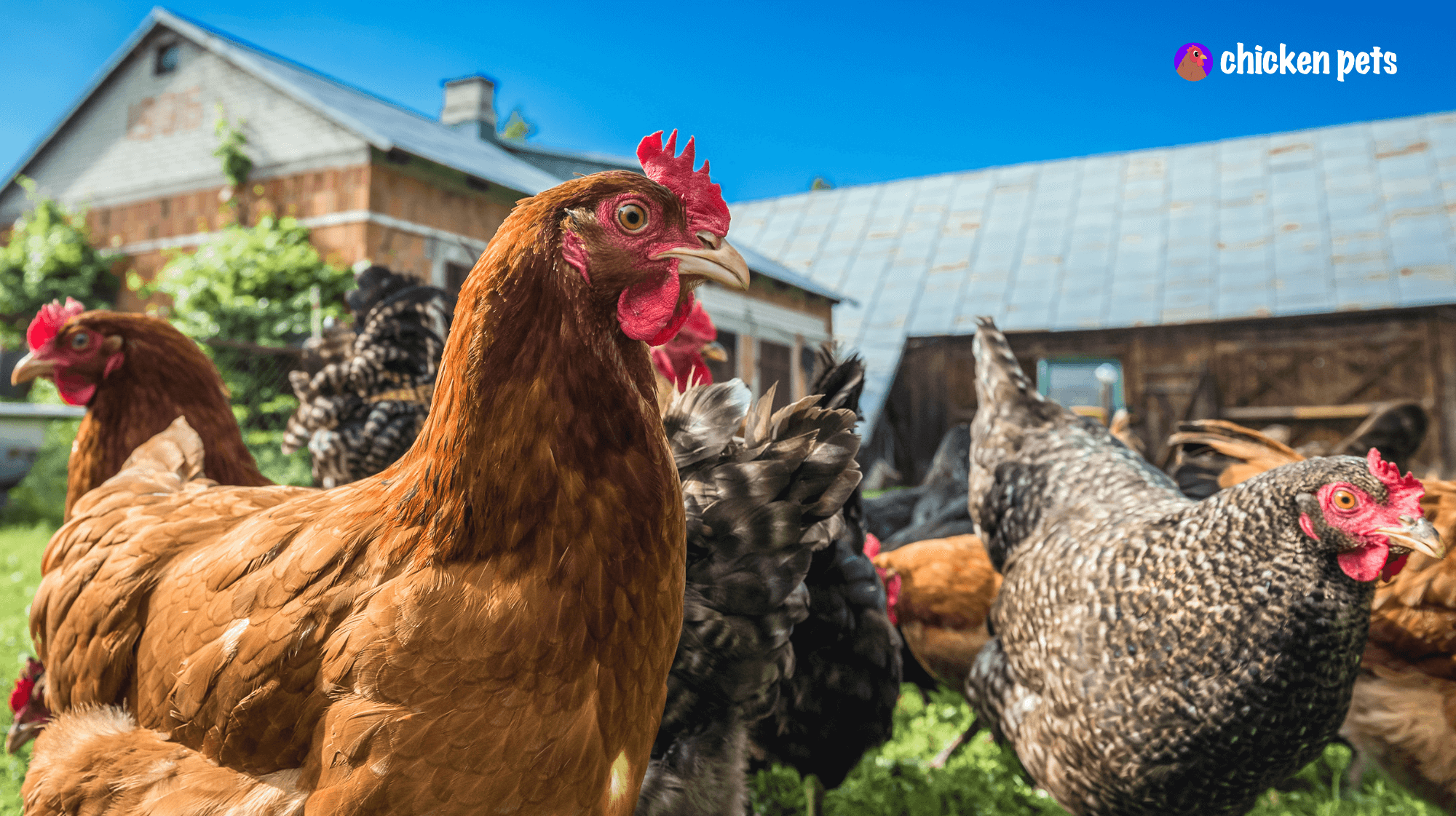
Alright, folks, it’s time to saddle up and take a trip down chicken breed lane! Selecting the right breed for your backyard flock is like finding the perfect cowboy hat – it’s all about getting the right fit. There are many factors to consider, including the weather, your personal preferences, and even the size of your coop. But don’t worry. We’re here to help you find the breed to make your backyard chicken dreams come true. Let’s get to it!
Discovering the Purpose of Your Poultry Posse
Before picking out the perfect feathers for our flock, let’s step back and consider the reason for our backyard chicken endeavor. Are you hoping for a steady supply of farm-fresh eggs for your breakfast burrito? Or maybe you’re looking to join the chicken barbecue championship circuit. Whatever your motivation, it’s crucial to understand why you want chickens in your backyard.
Think of it like picking out a car. You wouldn’t buy a sports car if you primarily use it to transport a large family, and you wouldn’t get a minivan if you’re a thrill-seeking speedster. Similarly, different chicken breeds have other specialties and abilities, so choosing one that fits your purpose is essential.
It’s worth noting that your purpose may change over time. Perhaps you start with egg-laying chickens but then fall in love with their quirky personalities and raise them as pets. That’s okay! Just be aware of what you want from your backyard chicken experience, and choose a breed that aligns with those goals. Trust us. You’ll thank us later!
Understanding Climate Hardiness: Hot or Cold, These Chickens Can Handle It All
Choosing a chicken breed that can thrive in your area’s climate is crucial for their health and happiness. It’s important to remember that not all chicken breeds are created equal regarding climate hardiness, and some breeds are better suited for hot climates, while others are more cold-hardy.
Imagine you adopt a fluffy, beautiful Plymouth Rock chicken, only to find out it can’t handle the scorching heat of your backyard. Or maybe you adopt a tiny Bantam, only to find it shivering in the freezing temperatures. That’s why choosing a breed that is well-adapted to your local climate is crucial.
Think of it as a match-making process, but instead of a love connection, it’s a weather connection. By taking the time to understand the climate hardiness of different chicken breeds, you’ll ensure that your backyard flock is healthy and happy and lays plenty of eggs all year round.
Finding Your Flock’s Personality: Understanding Chicken Temperaments
When it comes to chickens, not all breeds are created equal – especially when it comes to their personalities. Some breeds are sweet and docile, making them the perfect backyard pets, and others are more aggressive and may not be the best choice for families with small children or those who prefer quiet.
When considering different breeds, look at the breed’s reputation for temperament. Do they tend to be friendly and approachable, or are they more flighty and skittish? If you’re looking for a low-maintenance pet chicken, steer clear of breeds known for being aggressive. On the other hand, if you’re looking for a backyard flock that will provide a little excitement, consider breeds with more personality.
Remember, there is no guarantee that a chicken’s breed will determine its personality, as each bird is unique. But by considering the breed’s general reputation, you’ll be better prepared to choose a breed that fits your lifestyle and the environment you plan to provide for your backyard chickens.
The Great Eggscape: Choosing Your Hen for Egg-cellent Production
Are you ready for a daily farm-fresh breakfast in your backyard? Then you’ll want to choose the right chickens for your egg-cellent production! Not all chickens are created equal when it comes to egg laying, and with so many breeds to choose from, it can be overwhelming. But don’t fret! We’ve got you covered.
When selecting a breed for egg production, there are a few things to remember. Firstly, consider the color of the eggs you’d like to have in your basket. Some breeds lay brown eggs, while others lay white eggs. Some breeds lay eggs with a gorgeous array of colors like blue, green, and pink!
Next up, consider the size of the eggs you’d like. Different breeds lay eggs of varying sizes, so if you’re a fan of jumbo eggs, choose a breed that specializes in that—and drum roll, please. You don’t need a rooster to get eggs from hens. Yes, you heard it right! Hens lay eggs with or without the presence of a rooster. So, choose your egg-cellent egg-laying breed, and prepare for a daily dose of farm-fresh breakfast!
Making Room for your Future Feathered Friends: Consider Space Requirements
Space is essential when choosing the perfect breed for your backyard chicken-keeping experience. You don’t want your feathered friends to feel cramped and cooped up, nor do you want them to take over your entire yard!
Small breeds like Bantams can get by with limited space, but larger breeds require more room to stretch their wings. Think about the size of your backyard or coop area before choosing the size of your flock. The last thing you want is constantly tripping over your chickens, or worse, having them trip over you!
Remember, happy chickens equal happy chicken keepers, so ensure you have enough space to accommodate your feathered friends comfortably.
Babies or Eggs? Understanding the Broody Hens
Choosing the right chicken breed is not just about the eggs’ color, size, or number of eggs they lay. It’s also about the chicken’s personality, including broodiness. Broodiness is when a hen wants to hatch eggs and raise chicks, but what does this mean for you as the owner?
Some breeds are more prone to brooding and sitting on eggs, while others are less likely to do so. If you’re planning to hatch eggs in the future, choose breeds known for their brooding habits. These breeds will take care of the eggs, incubating them and keeping them warm until they hatch into baby chicks. This can be a fun and rewarding experience, but it can also be frustrating if you want to collect eggs regularly.
On the other hand, if you’re not interested in hatching eggs, choose breeds that are less likely to go broody. These breeds will lay eggs regularly and keep producing, making them a better choice for egg production.
So, what’s it going to be? Babies or eggs? It’s up to you to decide, but remember that broody hens can create a fun and fulfilling backyard experience.
Crowing the Blues: Choosing the Right Chicken for Your Ears
Some breeds are more chatty than others. If you live in a residential area or have close neighbors, it’s essential to consider the noise level of the breeds you’re interested in before deciding. You don’t want to be the neighborhood pariah because your birds are constantly crowing at the crack of dawn.
So, before you add chickens to your flock, consider whether you want a rooster that crows like crazy or hens that cluck gently all day. Some breeds, like Leghorns, are known to be quiet, while others, like the Rhode Island Red, are famous for their loud personalities.
Remember, even if you have a rooster-less flock, hens can still make a lot of noise when they lay eggs or are excited about food.
Putting Cluck to the Choosing Factors: A Guide to Selecting Your Backyard Flock’s Fine-Feathered Friends
Congratulations! You’ve reached the end of the journey to select the perfect chickens for your backyard flock. By considering the purpose, climate hardiness, temperament, egg production, space requirements, broodiness, and noise, you now have all the tools to choose the right chicken breed for your needs.
So, grab your feathers, and let’s fly to the next step of our chicken-keeping adventure. Are you ready to tackle every chicken lover’s question: “How many chickens should I get?” Stick around and find out!
The Great Chicken Count: Determining the Perfect Flock Size for Your Backyard

Ready to hatch a plan for your backyard chicken coop? One of the first decisions you’ll need is to figure out how many feathers you want to ruffle. That’s right. We’re talking about “Chicken Math”! Backyard chicken ownership is a lot of fun, but knowing that your small flock of just a few birds can grow or even shrink over time is essential. In this section, we’ll walk you through all the critical factors to consider when determining how many chickens should make your coop their home. From deciding your egg needs to considering space and breed selection, we’ve got you covered with all the egg-citing information you need to decide. Let’s get clucking!
Chicken Math and Flock Size
“Chicken math” refers to the unpredictable and often surprising growth in the size of a backyard chicken flock. It’s a tongue-in-cheek term used to describe the tendency for chicken keepers to start with just a few birds, only to find that their flock has grown over time. This growth can be due to various reasons, including the unexpected hatching of eggs, the acquisition of new birds, or the decision to keep roosters. “chicken math” can also refer to the unexpected shrinking of a flock due to illness, predation, or other causes.
The key idea behind “chicken math” is that it is difficult to predict the exact size of a backyard chicken flock and is often subject to change. For this reason, chicken keepers should be prepared for the possibility of growth and always plan for the care of their birds, including their housing needs and local zoning laws. However, despite its unpredictable nature, “chicken math” is also seen as one of the joys of backyard chicken keeping. It often leads to a growing appreciation for these fascinating and entertaining birds.
Chickening Out: How 5 Little Chicks Became a Flock of Fowl Folly!
Once upon a time, a new chicken keeper started with just five tiny day-old chicks. Little did they know, raising chickens was about to get a little more complicated.
One day, one of the chicks fell ill and passed away, causing the flock to shrink by one. The chicken keeper was heartbroken but knew they had to replace their fallen feathered friend.
So, they headed to the chicken store to buy another chick. But when they got there, they saw the cutest little trio of chicks, and before they knew it, they had brought home not one but three new little chickens!
But as the chicks grew up, the chicken keeper soon realized that one of their new additions was a rooster. And since their local laws didn’t allow roosters in the backyard, they had to find him a new home.
Feeling one chicken short, the chicken keeper headed back to the chicken store, and this time, they couldn’t resist the charm of two more cute and cuddly chicks.
And that’s how the story of chicken math starts. Before you know it, you’ve got a big, happy family of chickens, each with unique personalities, quirks, and egg-laying abilities!
Egg-cellent Math: Calculating Your Flock’s Daily Deliveries
Regarding backyard chickens, one of the most important things to consider is your egg needs. After all, that’s one of the main reasons people raise chickens in their backyards! A single hen can lay an egg approximately every 25 hours, but not every day. Some hens are more productive than others, and some breeds are known for their high egg production. So it’s essential to know how many eggs you need daily or weekly.
Let’s put it into perspective for a family of four:
- If your family goes through 4-5 eggs daily for breakfast, that’s roughly 28-35 eggs per week.
- If you like to bake, you might go through a dozen eggs in a week just for that purpose.
- And don’t forget about those egg salad sandwiches for lunch!
Considering these factors, you can get a rough estimate of how many eggs you need each week. And that will help you determine how many hens you should have in your flock. Remember that hens can take a break from laying occasionally, so it’s always a good idea to have a few extra eggs in the refrigerator, just in case.
Pecking Order: Understanding Age and Flock Dynamics for Your Feathered Friends
When starting a backyard chicken flock, age is just one of the many things you need to consider. Young chickens, or pullets, will begin laying eggs at around 5-6 months of age, so starting with these birds can help you meet your egg needs quickly.
But chickens are social animals; having just one bird can lead to a lonely, stressed chicken. Consider starting with at least three birds to provide each other with companionship and establish a pecking order within the flock, and remember the “chicken math” we discussed earlier. Chickens are happier in a group, and a small flock of three to six birds is a great starting point.
As your chickens grow and mature and you become more comfortable with chicken ownership, you may want to expand your flock. This is something to remember when starting your backyard flock, as you’ll want enough space for any additional birds you may want to add.
Cluck the Law: Checking for Local Chicken Regulations
Before starting your backyard chicken flock, it’s essential to check your local regulations. Some areas have rules on the number of chickens you can keep in your backyard, and ensuring you comply with these laws is vital.
Not only will following the regulations help keep you and your chickens safe, but it will also help maintain good relationships with your neighbors. If you need clarification on the regulations in your area, a quick call to your local government or a search online should provide you with the information you need.
It’s also important to note that some areas may have specific requirements, such as the type of housing or fencing you must provide for your chickens. Researching and following the regulations in your area can help ensure a successful and enjoyable backyard chicken experience.
Cracking the Code: Understanding the Different Ages of Chickens

Ah, the joys of backyard chicken raising! It’s like having your egg factory. But wait, before you go clucking crazy and run to the store to buy your feathered friends, you have the decision to make. How old should your new chickens be? Do you want the cuteness overload of day-old chicks, the promising potential of juvenile pullets, or the tried and true reliability of adult egg-laying birds?”
That’s right, folks! When adding chickens to your backyard flock, there are three main options. Each age has unique characteristics and benefits, so buckle up, grab your favorite feed, and dive into the world of chicken ages.
Baby Steps: Adopting Day-Old Chicks

Day-old chicks might be the way to go if you want to start your backyard chicken adventure from the ground up. These tiny fluffballs are the youngest of the flock, and just like a newborn baby, they need a lot of love and attention. Think of yourself as the proud parent of a feathered friend.
But with all that love and attention comes a great deal of responsibility. Day-old chicks must be kept warm, fed, and hydrated, which can be daunting for even the most seasoned chicken keeper. They’re incredibly delicate creatures, and the tiniest fluctuations in temperature or nutrition can mean the difference between life and death.
However, raising day-old chicks can be a rewarding experience if you’re up for the challenge. Watching them grow and mature into egg-laying hens is a unique and fulfilling experience. And who knows, you might find that you’ve developed a soft spot for baby chickens and want to keep them as pets for years to come.
Juvenile Pullets: Fledgling Feathered Friends

Ahh, the gangly teenagers of the chicken world! Juvenile pullets, also known as teenage hens, are young ladies that have finally hit puberty and are ready to start laying eggs. They’ve grown out of the constant need for heat and cuddles that day-old chicks require, but don’t worry. They’re still not ready to move out on their own.
While these chicks are a bit more low-maintenance than their younger counterparts, they still have much growing up. When starting with pullets, they might not be as friendly as the day-old chicks and might take longer to warm up to you. But, once they do, they’ll be loyal friends for life. And who doesn’t love an excellent teenage story? The drama, the mood swings, the love of food! Juvenile pullets are a perfect option for those who want the experience of raising chickens from a young age but with a little more freedom to focus on other things.
So, if you’re up for a bit of a challenge but still want to be your chickens’ cool aunt or uncle, then pullets might be the perfect option.
Egg-cellent Adults: The Low Maintenance Hens of the Coop

The adult egg-laying birds are the boss ladies of the chicken coop. They’ve already done the hard work of reaching maturity, and now they’re just cruising through life, laying eggs left and right. These hens have got it all figured out, so caring for them is a breeze. With adult egg-laying birds, you can sit back, relax, and let the eggs come to you. They don’t need special attention like heat lamps or frequent feedings like the day-old chicks, and they’re less skittish than the juvenile pullets, so handling them is a piece of cake. In short, adult egg-laying birds are like the grandma of the coop, always there to lend a helping hand and make things just a little bit easier. But be prepared to spend more on these experienced feathered friends, as they come with a higher price tag than the other ages.
Pay to Play: Understanding the Cost of Purchasing Chickens
It’s essential to know the cost of entry. Like anything else, you’ll find that some options are more affordable, while others are a bit more fowl. Let’s look at the prices you can expect when buying your feathered friends.
Day-old chicks, the little fluff balls of the chicken world, are the most budget-friendly option. They can cost anywhere from a few clucks to a few coins, usually between $3 and $5. But don’t get too excited just yet. Remember, these babies require much attention and care to keep them healthy and happy.
Pullets, the teenage years of the chicken world, sit right in the middle of the cost spectrum. They aren’t as expensive as the seasoned egg-laying birds, but they’re also not as cheap as the day-old chicks. So, this might be your option if you want a good balance between cost and responsibility.
Finally, we have the seasoned egg-laying birds. These mature hens are already laying eggs and require the least attention. However, with all that experience comes a higher price tag. You can expect to spend anywhere from $20 to $50 for one of these feathered pros, and you may need to shell out more dough if you want a specific breed.
Remember, chickens are social creatures and need friends. So, plan on buying at least two of them. And, if you’re an egg-lover, consider purchasing more. The cost of raising chickens goes beyond the initial purchase price. But, with all the fresh eggs you’ll enjoy, it’s a price worth paying.
Chicken Breeds 101
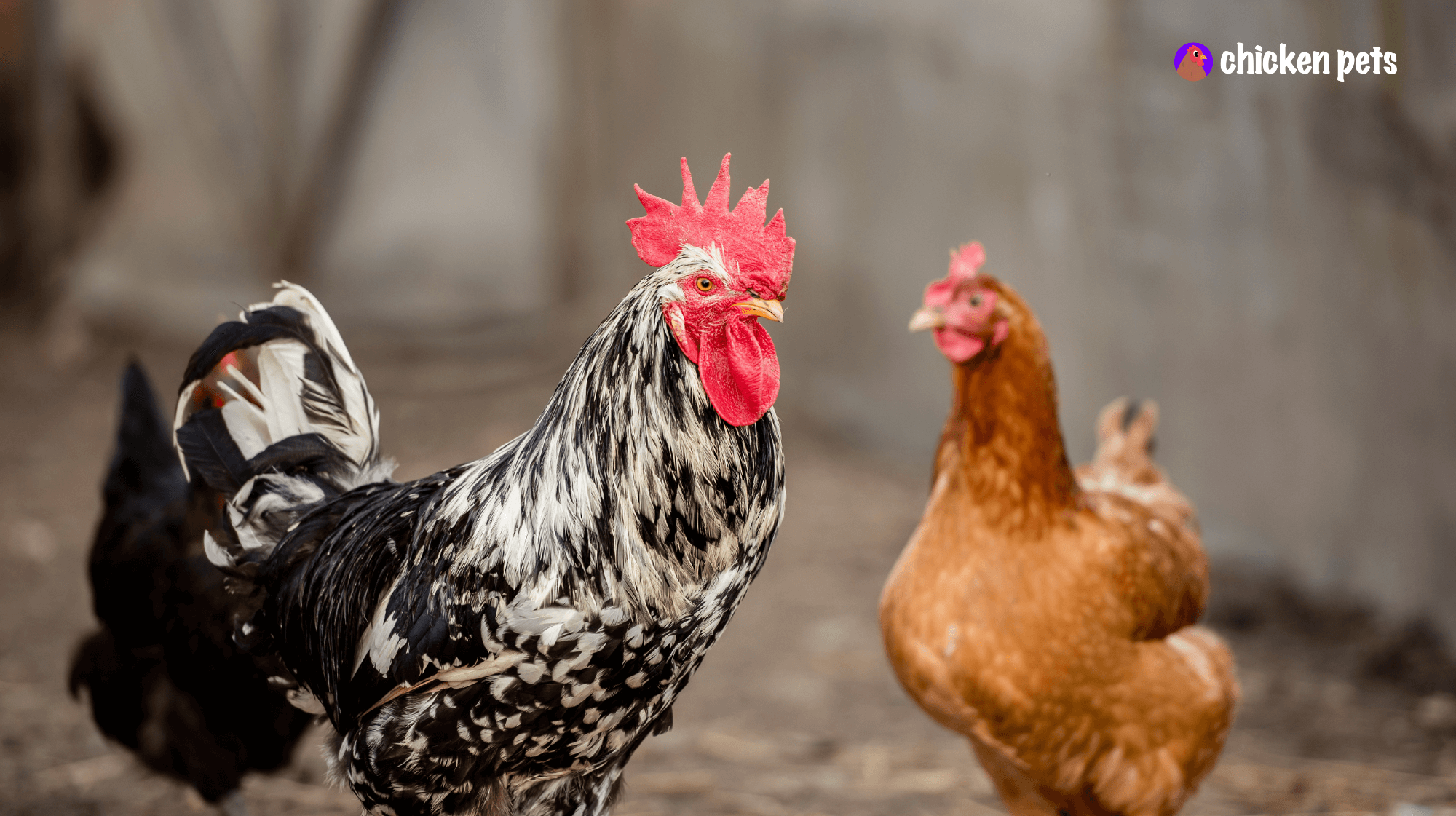
You’ve probably heard the phrase “as different as birds of a feather,” but not all feathers are created equal when it comes to chickens. There are a variety of chicken breeds out there, each with its unique traits, characteristics, and purposes. Whether you’re a seasoned chicken farmer or a curious newbie, knowing the different categories of chicken breeds is essential. So, get ready to take flight into the world of chickens!
Pure Breeds: The Story of Pure Breeds
As their name suggests, purebred chickens belong to a specific breed that is uniform in appearance, traits, and genetics. These breeds have been carefully developed and maintained over generations to standardize particular features and characteristics. Some common examples of pure breeds include Leghorns, Plymouth Rocks, and Rhode Island Reds. These breeds were historically used for specific purposes, such as egg-laying or meat production, and they tend to excel in these areas.
Hybrids: The Best of Both Worlds: Hybrids and their Mix-tastic Traits
On the other hand, hybrids result from crossbreeding purebred chickens. By mating two different purebreds, breeders aim to produce chickens with a mix of the best traits from both parent breeds. Hybrids are often used for commercial egg and meat production, as they tend to have improved hardiness and disease resistance. They may have a more diverse appearance and traits than purebreds, but their genetics are not as uniform.
Pure Breeds vs. Hybrids: The Great Chicken Debate
Which is the better option for you? Well, it depends on what you’re looking for in a chicken. Purebreds might be the way to go if you want to preserve specific breeds and their unique traits. On the other hand, if you’re more focused on practicality and hardiness, then hybrids might be the better choice.
Regarding breeding, purebreds were historically used for specific purposes, while hybrids were created to improve traits and hardiness. In terms of appearance and characteristics, purebreds tend to have a more standardized look, while hybrids may have a broader range of features. Hybrids tend to be stronger in hardiness and disease resistance, but purebreds may have unique genetic adaptations. Finally, purebreds may excel in specific areas of egg and meat production, while hybrids tend to be more versatile.
Ultimately, the choice between purebreds and hybrids comes down to your preference and what you want in a chicken. Whether you’re looking for purebreds’ beauty and elegance or hybrids’ versatility and hardiness, the most important thing is to choose the breed that’s right for you and your flock!
Feathery Fractions: A Side Note on Chicken Breeds
Have you ever heard of heritage breeds or commercial breeds? While these subcategories of chickens exist, they have more to do with our feathered friends’ history and industrial agriculture. We’ll stick to the two most relevant categories for backyard chickens: Pure Breeds and Hybrids. Now, let’s go back to the clucking good times, shall we?
Common Beginner Chicken Breeds
When raising backyard chickens, choosing the right breed is crucial. There are countless breeds, each with unique characteristics and quirks. To help you make an informed decision, we’ve compiled a list of some of the most common chicken breeds you might encounter. From their egg-laying prowess to their hardiness in different climates, this table provides a general idea about what each breed has to offer.
A poultry PSA: Your chicken may vary
Please note that chickens are like snowflakes, no two are the same. The facts presented are a general idea of what to expect. Your chicken may vary in size, weight, egg-laying rate, and general attitude. Treat them like individuals and you'll be just fine!

Ameraucana
The Ameraucana chicken is a medium-sized breed of poultry known for its colorful eggs and distinctive beard and muffs.
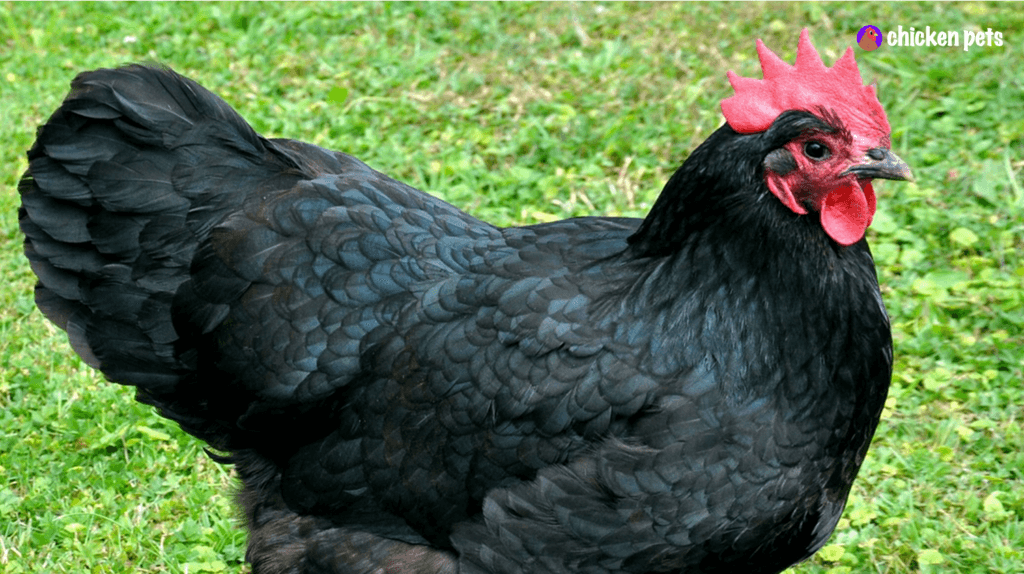
Australorp
The Australorp is a dual-purpose chicken breed from Australia, known for its shiny black feathers, docile temperament, and high egg-laying productivity.

Bantam
The Bantam chicken breed is like a pocket-sized pal, with their tiny size and prominent personalities making them the perfect feathered friend for any chicken enthusiast!

Brahma
The Brahma chicken breed is like a gentle giant, with feathered legs and a calm personality, making it a popular choice for backyard flocks.

Buckeye
The Buckeye chicken breed: a spunky and sassy addition to your backyard flock, with a bold personality and stunning mahogany feathers.

Cochin
The Cochin chicken breed is basically a big, fluffy ball of feathers that is just as sweet as it looks.

Cream Legbar
The Cream Legbar chicken breed: a funky and fashionable bird that lays beautifully blue eggs, adding a pop of color to your morning breakfast routine!

Delaware
The Delaware chicken breed is like a stylish bird in a black-and-white suit who loves laying eggs and making friends!
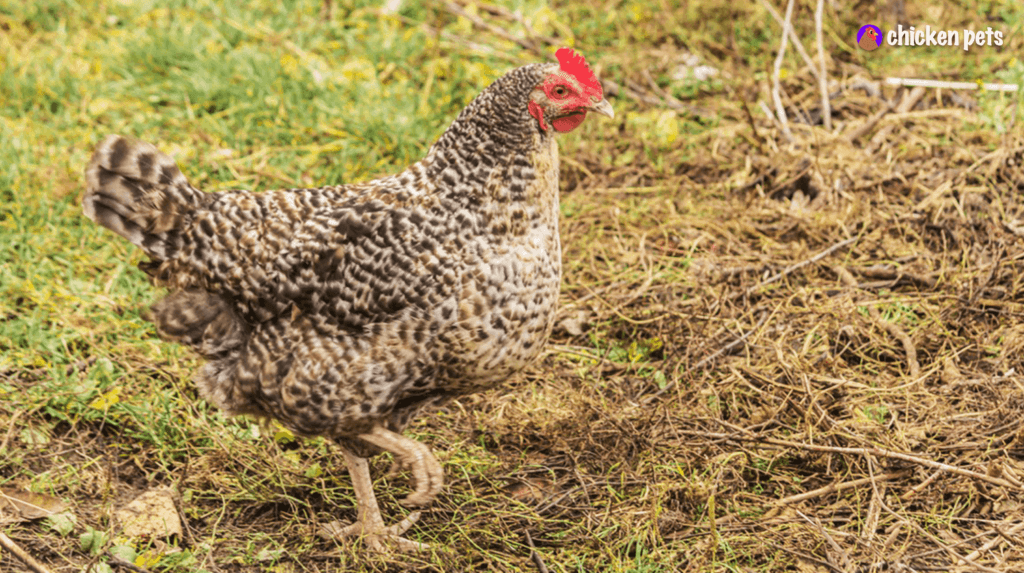
Dominique
The Dominique chicken breed is like a fancy referee of the poultry world with its black and white striped feathers!

Easter Egger
Easter Egger chickens are like a box of chocolates; you never know what you'll get - except, in this case, it's colorful and unique eggs!

Faverolles
The Faverolles chicken breed is like a fluffy, friendly teddy bear with feathers!

Jersey Giant
The Jersey Giant chicken breed is so big, it's like having a pet velociraptor in your backyard.

Marans
The Marans chicken breed is like a delicious chocolate egg-laying machine, with their stunning dark brown eggs being a favorite among chicken keepers and foodies alike.

Olive Egger
The Olive Egger chicken breed is not just an egg but an Easter egg, with its colorful and unique olive-green eggs that will make your breakfast table feel festive every day!
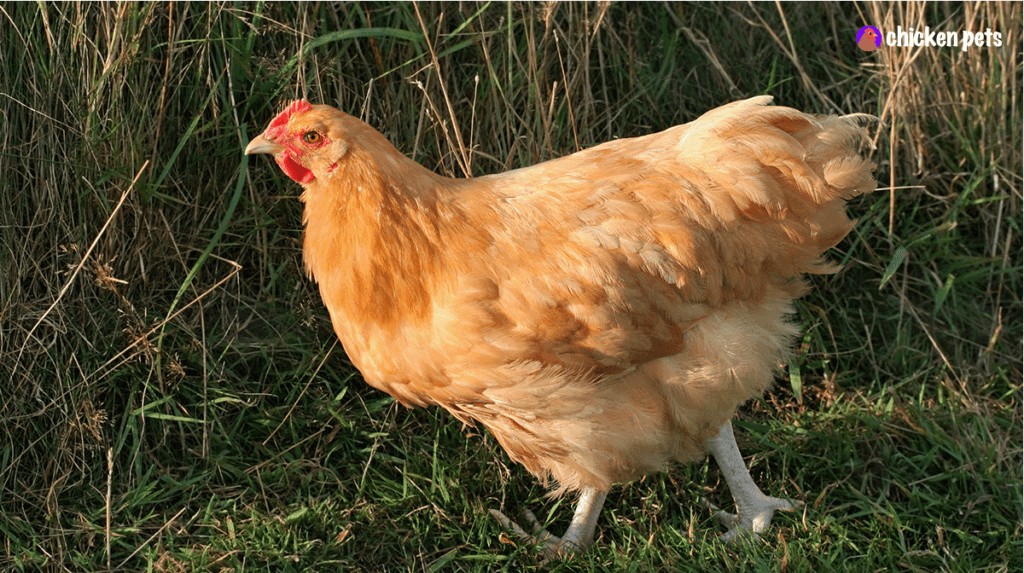
Orpington
Orpington chickens are a delightfully charming breed with soft, fluffy feathers and gentle personalities, often likened to big, cuddly teddy bears roaming around the yard. They're an excellent choice for backyard flocks or small farms.

Plymouth Rock
The Plymouth Rock chicken breed is like a box of chocolates - you never know what you'll get, with their variety of colors and patterns making them a delightful surprise every time!

Polish
The Polish chicken breed is like a walking feather duster with its distinctive fluffy head crest, and they're not just a pretty face. These friendly and curious chickens are always up for a good time, whether following you around the backyard or trying to steal a treat from your hand!

Rhode Island Red
The Rhode Island Red chicken breed is like the Energizer Bunny of the chicken world. Their tireless energy and impressive egg-laying ability keep them going and going and going!

Sexlink
The Sexlink chicken breed is like a magical chicken - its feathers reveal whether it's a boy or a girl!

Silkie
The Silkie chicken breed is like a walking teddy bear with its fluffy and cuddly appearance. Their sweet and gentle demeanor makes them the perfect addition to any chicken-loving family!

Sussex
The Sussex chicken breed is a charming and cheerful addition to your backyard, with a winning personality and excellent egg-laying abilities to boot!
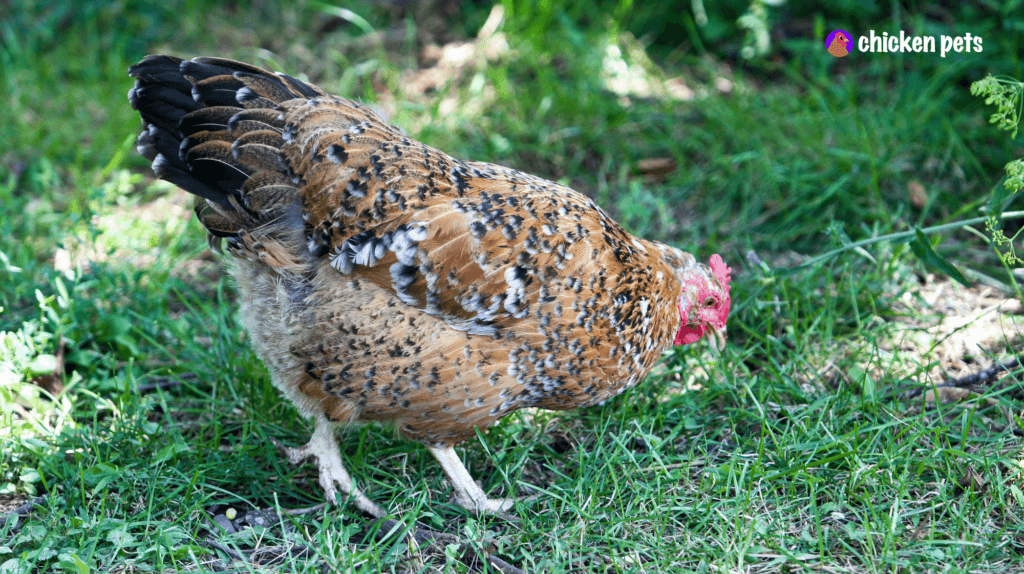
Swedish Flower
The Swedish Flower chicken breed is like a walking work of art, with stunning and unique feather patterns that will make them the coop's talk!

Welsummer
The Welsummer chicken breed is like a little egg-laying machine, producing delicious and distinctive terra-cotta brown eggs that will brighten any breakfast plate!

Wyandotte
The Wyandotte chicken breed is like the chicken version of a rainbow, with their striking variety of colors and their friendly, laid-back personality making them a joy to behold!
Where to Find Your Feathered Friends: A Guide to Chicken Procurement

With the growing popularity of backyard chicken keeping, there are now several options for obtaining chickens. Whether you’re looking for a specific breed, a large flock, or just a few egg-laying hens, there is a source that can meet your needs. The following is a brief overview of the different options for obtaining chickens:
Sources for Obtaining Chickens
- Hatcheries — These commercial operations specialize in breeding and selling chickens. They typically offer various breeds and can provide both day-old chicks and fully-grown birds. Some hatcheries even offer a “custom hatch” service, where you can specify the breeds and genders you want.
- Feed Stores — Many feed stores carry chickens, especially during the spring and summer. These birds are usually sourced from local hatcheries or breeders and can be a good option if you’re looking for a few birds.
- Mail Order — If you’re looking for a specific breed unavailable locally, you can often find what you’re looking for through mail order. Many hatcheries now offer to ship directly to your doorstep.
- Local Breeders — If you’re looking for a specific breed or want to avoid the hassle of shipping, you can often find local breeders through classified ads, local newspapers, or online communities. These breeders may also have adult birds for sale, which can be a good option if you want to add to your flock.
- Rescues — Taking in “rescue” chickens can be a great way to give a new home to birds in need. However, it’s essential to remember that these birds have often gone through some bad experiences, like bullying, feather picking, and more. They may need to be handled differently from other birds and be separated from the flock for a while.
Pros and Cons of Each Source
When considering where to obtain your chickens, weighing each option’s pros and cons is crucial. For example, hatcheries offer various breeds and can provide healthy birds, but they may also be more expensive than other options. On the other hand, local breeders can be a great way to find specific breeds, but they may have different selections than hatcheries.
Beware Where You Buy Them
Regardless of where you buy your birds, you must do your due diligence and ask plenty of questions. Some questions to ask and the reasons why are:
- What is the history of the flock? — Knowing the history of the birds can give you insight into their health and behavior. For example, if the birds have been exposed to diseases or have gone through a lot of stress, this can affect their health and well-being.
- Is the facility clean and well-maintained? — A clean and well-maintained facility ensures that the birds live in a safe and healthy environment.
- Have the birds been vaccinated? — Knowing if the birds have been vaccinated can help determine their level of protection against common chicken diseases.
- Is the seller certified? — A certified seller is knowledgeable and follows best practices in raising and caring for chickens.
- What is the biosecurity policy of the seller? — Knowing the seller’s biosecurity policy can help you understand the measures they take to prevent the spread of disease.
- Have there been any recent cases of pests or illnesses? — This information can help you determine if the birds have been exposed to any diseases or pests that can affect their health.
- Can customers pet the chickens? — This question can help you determine if the birds have been socialized and if they are friendly with people.
- What is the policy on returns? — Knowing the seller’s return policy can give you peace of mind if you receive unhealthy or unsuitable birds for your needs.
- How old are the birds? — Knowing the age of the birds can give you an idea of how long they have left to lay eggs and how long they will live.
- What is their diet? — Knowing the birds’ diet can help you determine if they are getting the proper nutrition they need.
- Have they been socialized? — Socialized birds are more likely to be friendly and easier to handle.
- How are they housed? — Knowing how the birds are housed can give you an idea of their living conditions and if they are receiving proper care.
- What breeds are the birds, and what are their unique characteristics? — This information can help determine if the birds fit your needs and lifestyle.
- How has the seller handled them? — Knowing how the birds have been handled can give you an idea of their temperament and how they will react to being handled by you.
- Have the birds been raised in a stress-free environment? — A stress-free environment can help ensure the birds are healthy and happy.
- Does the seller know about the breed and its care requirements? — Knowing that the seller is knowledgeable about the breed and its care requirements can help you receive accurate information about the birds and their needs.
Starting with Healthy Birds
When starting or adding to your flock, starting with healthy birds is always a good idea. Not only will this help ensure that your flock stays healthy over time, but it will also save you time and money in the long run. When looking for healthy birds, look for signs of good health, like clear eyes, smooth feathers, and a healthy appetite. Ask the seller or a veterinarian for their opinion if you need clarification.
With these tips, you can find the perfect chickens for your backyard flock. Happy hunting!
The article is a chapter from our book. Keep reading the chapters below.

- Backyard Chickens: The Beginners Guide
- Chapter 1: Raising Chickens in Your Backyard. Pros, Cons, Costs
- Chapter 2: Chicken Coops. Components, Buying, Building
- Chapter 3: Chicken Breeds for Beginners. Where to Start
- Chapter 4: Baby Chicks. Everything You Need to Know
- Chapter 5: Feeding and Watering Chickens Ultimate Guide
- Chapter 6: Chicken Health and Hygiene: The Master Guide
- Chapter 7: Chicken Eggs. The Incredible Edible Egg!
- Chapter 8: Chicken Psychology and Behaviors
- Chapter 9: Chicken Shit. Quality, Consistency, Color, Smell
















